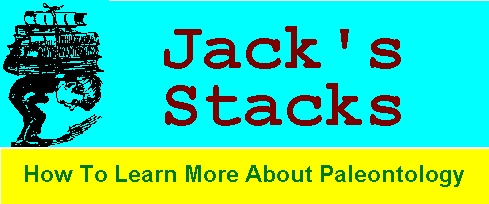
Leakey/Lewin Reconsider Origins

This month sees another diversion from trilobites and crinoids. Yes, I've read another book in paleoanthropology, this time it's Origins Reconsidered, by Richard Leakey and Roger Lewin, Doubleday, 1992. Roger Lewin, by the way, is a writer for the Journal Science. The 375 page hardcover version lists for $25.00 and the softcover lists for $14.95.
I must confess that I never read Richard Leakey's earlier work, Origins, again with Roger Lewin. This is somewhat strange since my youth was spent reading of the discoveries and theories of Richard's famous father Louis and later of his mother Mary in National Geographic. I'm not sure where Richard fell into disfavor with me, although I do know that I considered him to have a closed mind regarding the theories of others, notably Donald Johanson. Johanson's work, along with Tim White's, took some fairly good shots at the Leakey tradition following the discovery of "Lucy". I bought the Johanson-White line to the exclusion of anything Richard had to offer. As a matter of fact, I bought this book because I thought that Richard was finally going to change his theories of human origins and admit that his professional competitors, so to speak, were right after all.
Not only was I wrong about what Richard would say in Origins Reconsidered, I was very wrong about him. I was certainly wrong in thinking he had a closed mind about new findings.
I found Richard's presentation to be absorbing as he interwove the reality of fossil discovery with fictional tales of the possible manner of the individual's life style, death, and burial. These ideas are short divergences treated as fictional vignettes in the life and times of prehistoric hominids. To some these tales may seem fanciful, but Leakey blends each with factual current research findings in areas such as human behavior, non-human primate behavior, origins of language, origins of culture, and origins of religion. This treatment makes his stories quite plausible but not necessarily accepted scientific fact.
Origins Reconsidered deals less than you might think with the fossil discoveries of Richard Leakey. His personal quest and reason for the book is to present a workable theory for the origin of modern humans. Support for each area of discussion comes from the current works of scientists in many areas.
The book begins with the story of discovery of Richard Leakey's most famous find at Lake Turkana, that of the most complete Homo erectus skeleton yet found. Different phases of the discovery are detailed in segments and interspersed throughout the book.
As I have seen in many other recent works, Richard discusses societal bias and its effects on scientific thought, both past and present. This naturally and most obviously concerns Darwinism and evolution. He does make mention of preconceptions during a number of times when Donald Johanson's work is brought up. It was nice to see that no cheap shots were taken in this regard. As a matter of fact, Richard balances comments concerning the bias of others with admissions of his own biases.
Amongst the more interesting subjects dealt with throughout the work is analysis into just what does make a human a human. In other words, what does it take to be able to label a particular fossil primate as human? In the author's view, firm evidence of culture is required. Modern humans, Homo sapiens, evolved about 150,000 years ago while early modern human beginnings are thought to be around 2,500,000 years ago. Richard discusses the Neanderthal question: their language abilities, questions of their culture and religion, tool making ability, contact with other early humans, and the possible reasons for their extinction. Were they human?
Evolutionary pressures influencing development toward bipedalism are presented as global in scale. Climate change is indicated as a prime contributor. Global cooling and mountain building are both shown to have dramatically changed the habitats of our pre-hominid ancestors in Africa.
Just how much can be deduced from bones alone? The answers may surprise you. Given the right bones, bipedalism can be determined from hip and leg joints, and even to some extent from the position of the opening in the base of the skull (the foramen magnum). Potentially, the base of the skull can give an indication of the range of sounds the creature can produce and thus infer capability for complex language. Teeth can indicate diet and also an individual's age at death. Gestation period can be somewhat determined from hip structure. Many of these can not be taken as cold hard facts as some remain under debate.
I think my most favorite chapters were the last three in which consciousness, art, religion, and Richard's summary were presented. I liked each for different reasons, some because I gained new knowledge in an area of interest, and others because I agreed strongly with his thoughts.
I would certainly recommend this book to any of you who have a keen interest in paleoanthropology. Should you want to delve more deeply into the technical aspects of the "Turkana boy", you might want to investigate The Nariokotome Homoerectus Skeleton edited by Alan Walker and Richard Leakey. This is a 1993 publication from Harvard University Press, hardbound, at $125.00. I briefly scanned a copy at Books & Company and found it to be a strictly technical offering.